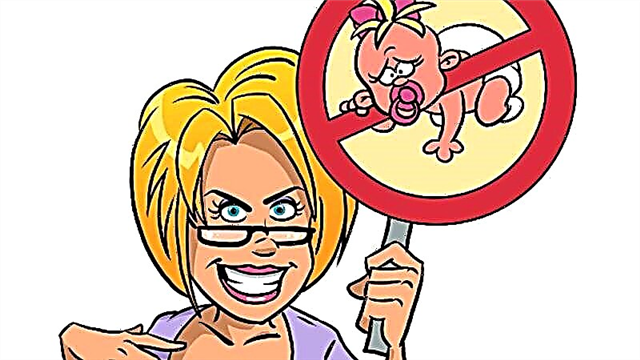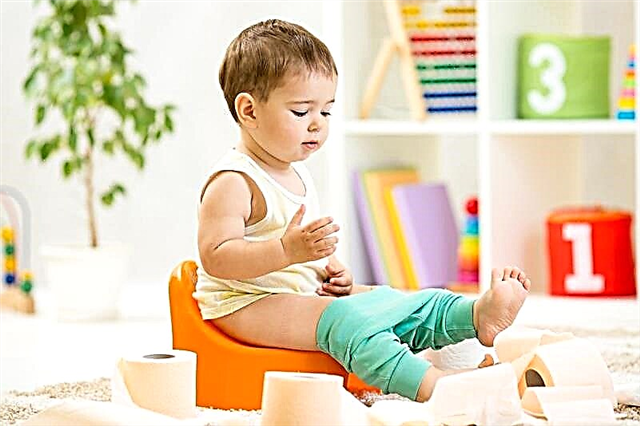When a child has a cold, the nose tends to be blocked, and after a while this becomes uncomfortable. Many parents believe that a child needs to blow his nose, and this should be done as hard as possible in order to get results. But this is not a good practice, and it can be harmful. We will talk further about how to blow your nose correctly to a child so as not to harm and not get complications.
Features of rhinitis in children
The three most common causes of a runny nose are colds, sinusitis, and allergic rhinitis. Each of these conditions causes swelling in the nose and the production of extra mucus, which flushes away infection, irritants, or allergens.

Both swelling and extra mucus lead to nasal congestion. Removing mucus by blowing your nose slightly reduces this accumulation.
Infants and children under 3 years of age do not yet know how to coordinate the mechanics of blowing their nose out. They tend to repeatedly suck thick mucus back into the nose or allow it to drain down the upper lip.
Storing this mucus (rather than blowing it out, removing it) is thought to create a cycle of irritation that causes a runny nose to persist for weeks or longer.
This is because the uncleaned mucus acts as a good home for bacteria to grow.
Thick mucus can also be carried from the nasal passages to the throat by gravity, leading to irritation and coughing. This mechanism underlies the most common cause of prolonged cough following a viral infection or allergic rhinitis.
What does a runny nose lead to?

A runny nose in children can cause the following negative consequences.
- Due to difficulty breathing, the child begins to breathe through the mouth, which leads to the development of tonsillitis or adenoiditis.
- Fluid leaking from the nose irritates the skin above the lip, causing it to become inflamed and infected.
- In children, a long-term cold often turns into otitis media, for a small child this is fraught with great danger.
- The work of the respiratory system is disrupted, because of this, the cardiovascular system also suffers.
- The child quickly gets tired, becomes restless and lethargic.
- The child's sleep is disturbed, loss of appetite occurs.
Based on the above, it makes sense to encourage children to blow their nose to remove unwanted mucus.
What happens when a child blows his nose?
Let's start with a closer study of the structural features of the nasal passages.
Inside the nostrils there are turbinates which, when healthy, have the same pink color as the gums of the mouth. Nasal mucous membranes that are red or bluish can signal allergies or infections.
The nasal passages are lined with tiny hairs (villi) that form a defensive line against foreign objects. When debris, bacteria, viruses, or fungus are inhaled, the villi trap them and prevent them from entering the lungs.
The hypersensitive villi are designed to respond to other conditions, such as an increase in viscous mucus caused by cold or allergies. When the villi encounter this, they begin to move faster and propel these unwanted guests to the nasal exits. Sometimes the child is required to help these villi in the form of blowing out.
Blowing your nose is a complex procedure that is second nature to most people and helps to always respond to what is happening in the nostrils. When a baby blows his nose, he forces air out of his nasal tubes, along with debris and mucus.
However, if the child has severe inflammation of the nasal mucosa, it may be nearly impossible to breathe through the nose. If you ask your child to blow their nose anyway, it can throw infected mucus into the sinuses. A 2000 study found that when children tried to blow their nose when they had nasal congestion, mucus was thrown into the sinuses, causing a significant increase in pressure in the internal structures of the nose, which could negatively affect the Eustachian tubes.
How to properly blow your nose to a child?
There is a proper technique that can minimize the risk of mucus moving upward into the sinuses, reducing the risk of injury.
- Have the child gently blow air out of the nose. Breathing out too hard creates even more pressure, which can force infectious mucus to enter children's ears and sinuses.
- Avoid blowing out "with both nostrils". Instead of this:
- close one nostril of the child;
- ask your child to gently blow their nose into paper tissue through one open nostril;
- close the other nostril, ask the child to repeat.
- After waking up in the morning, the child's nose will be practically clogged. You should not immediately ask him to blow his nose. Better to wait, stand for five or ten minutes.
- Offer your child plenty of fluids. This will make it easier to remove mucus with gentle blowing. Blowing your nose can also be facilitated by taking a steam shower.
- Use paper napkins, not woven handkerchiefs. The used handkerchief is a breeding ground for microbes, and when reused, microbes spread to the skin around the face and hands.
- Use a paper towel only once, then discard it. This minimizes the risk of germs returning to the face and hands.
- Wash your hands when you're done, as germs from the nose and tissue will be transferred to your fingers during blowing.
How to teach a child to blow his nose?

When you become a parent, you need to realize that your child needs to be taught skills that adults take for granted.
The simple task of blowing your nose seems easy for adults, but it can be as difficult as learning a foreign language for a child.
When trying to explain how this task is accomplished, you will be faced with the fact that the child does not want the napkin to be near his nose.
Teaching children to self-empty the nose of mucus can be difficult.
The sequence of the formation of the skill of self-cleaning of the nasal cavity
These are typical age ranges for breaking down the skill required to be independent in removing mucus from the nose.
- 1 year old - baby lets you wipe his nose.
- 1.5 years old - the baby tries to wipe his nose without actually completing the task.
- 2.5 years - the child wipes his nose on request.
- 2.5-3.5 years - wipes his nose without asking.
- 2.5-3.5 years old - blown out on request.
It should be noted that children do not always follow these milestones and that every child is different. Sometimes children cannot blow their nose until they are 5 years old. As with any skill a child learns, there are different ranges of development.
Parents wondering how to teach a 1-year-old child to blow their nose are in a hurry. The best time to start training is 2 years. A one-year-old child still cannot understand what adults demand from him.
Most children are experts at blowing air out of their mouth. This is thanks to the training they get from making bubbles and blowing out candles on a birthday cake. Understandably, blowing air out of their nose may not be so familiar.
Train your child to gently blow air out of their nostrils. You may be able to persuade your child to try it in a playful way.
Useful Tips
- It is necessary to teach a child to blow his nose only during a period when he is absolutely healthy, in a good mood, and his nose breathes freely. Otherwise, the mother will receive only tantrums and whims.
- It should be borne in mind that at first nothing will work. Therefore, parents should be patient, encourage the child and set him up for a positive result.
- If a child suddenly falls ill during training, the training should be postponed.
Strategies for helping kids learn to blow their nose
To do this, you can use the following games.
"Blow off the feather"
You need to put a small feather on the table. If not, cut into small pieces of paper. The child should blow on the feather with his mouth. Then mom asks him to do the same, only with his nose. It is also necessary to explain that you can blow out air from only one nostril, and pinch the other with your finger.
"Aircraft"
There is no need to make planes to play. They can be easily replaced with candy wrappers, paper, cotton wool, small napkins. The airplane should be placed on the airfield (child's palm), and offer to start blowing. To do this, take a deep breath and blow out the air through one nostril. You can organize a game contest "Who will launch more planes".
"Hedgehog"
Invite your child to play hedgehog. You will need a hedgehog toy or a picture of it. The adult first demonstrates how the hedgehog puffs. Then the child does the same.
"Train"
Children will be happy to depict a train. Tell your child that the nostrils will replace the chimneys of the locomotive. They need to buzz in turn.
"Fog"
Ask your child to close one nostril and blow air through the nose onto the mirror to create a foggy spot.
Ultimately, your child will need to learn how to gently push air out of one nostril at a time. The correct way to blow your nose is to pinch one nostril with your finger to release air from the opposite nostril. Then repeat from the opposite side.
Napkin training
Once the child understands how to control the flow of air from his own nose, he is ready to try it using a tissue.

At first, hold the napkin instead of the child to show him where to place it. The child should not pinch his nostrils or wipe his nose until he starts to blow out air. Again, this sounds simple, but it can take a few tries to get it right.
Thus, your child will need to practice placing the napkin right at the base of the nose and holding it with his fingertips.
First, your child needs to learn how to blow his nose using both hands, then he will learn how to handle the napkin with one hand.
Parents should be gentle and patient. You should not force the child to perform actions, he must show interest and desire himself. Think creatively for your child. And you will succeed.



